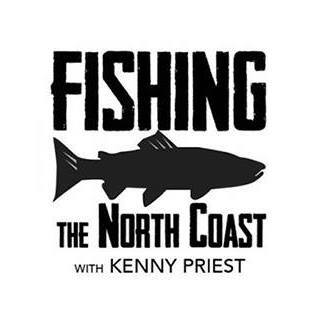Mad River Fish Report for 11-12-2020
New Zealand Mud Snails found in the Mad River
Mad River - Arcata, CA

by Kenny Priest
11-12-2020
Website
In mid-October, a large density of New Zealand Mud Snails was discovered near the Annie Mary Bridge by the Blue Lake Tribes Environmental Dept. The tiny aquatic snails can reach, on average, up to 4-6 mm long in the western United States. Upon reaching maturity at 3 mm, females can produce 230 new females per year; estimates indicate that one snail and its offspring can result in over 2.7 billion snails within 4 years according to CDFW. They may consume up to half of the food resources in a stream or river and have been linked to reduced populations of aquatic insects, including mayflies, caddisflies, chironomids, and other insects important to trout and salmon.
They are found on a wide variety of substrates and vegetation in fresh and brackish lakes, rivers, streams, and estuaries. Dense populations become the dominant macroinvertebrate through displacing and outcompeting native species; some North American streams have reached densities over ¾ million individuals/m2.
Once in the river, getting rid of them is impossible, but there are ways to minimize the spread. This is extremely important as we approach winter steelhead season with anglers moving from river to river. Many AIS (aquatic invasive species) are difficult, if not impossible, to see in the environment and can be unknowingly transported to new locations on equipment. Therefore, decontamination is necessary to prevent the spread of AIS between different waterbody locations. To achieve this, equipment should be decontaminated following the protocols outlined in this document. All equipment that comes into contact with water during field activities and watercraft should be decontaminated using one or more of the protocols listed below.
General procedures to prevent the spread of AIS:
• If decontamination is not done on site, transport contaminated equipment in sealed plastic bags and keep separate from clean gear.
• Gear may be dedicated for a specific field site but should be left on site and be cleaned when moved off site.
• Sets of field gear may be rotated in and out of field per cleaning cycle.
• When practical, begin work upstream and work downstream. This avoids transporting AIS to non-infested upstream areas.
Equipment Decontamination/Disinfection Methods
Option 1: Standard Decontamination Freeze + Saltwater Immersion + Dry. This option consists of three parts, as freezing alone may not kill some organisms
• Scrub gear before leaving field with a stiff-bristled brush to remove all debris. Thoroughly brush small crevices such as boot laces, seams, net corners, etc.
• Bag gear for transport from field to office.
• Place gear and bag in a freezer below 32°F for a minimum of eight hours.
• Thaw gear and bag.
• Immerse gear and bag in 5-10% saltwater solution for 10 minutes.
• Rinse gear.
• Hang gear to dry.
For more information, visit
https://wildlife.ca.gov/Conservation/Invasives/Species/NZmudsnail
Find "Fishing the North Coast" on Facebook and fishingthenorthcoast.com for up-to-date fishing reports and North Coast river information. Questions, comments and photos can be emailed to [email protected].
More Reports
Nor Cal Fish Reports Reports
for Thursday, November 12th, 2020Chetco River: The Chetco is Full of Salmon
Nor Cal Fish Reports Reports
for Thursday, November 5th, 2020Smith River: Smith River Report

Website Hosting and Design provided by TECK.net